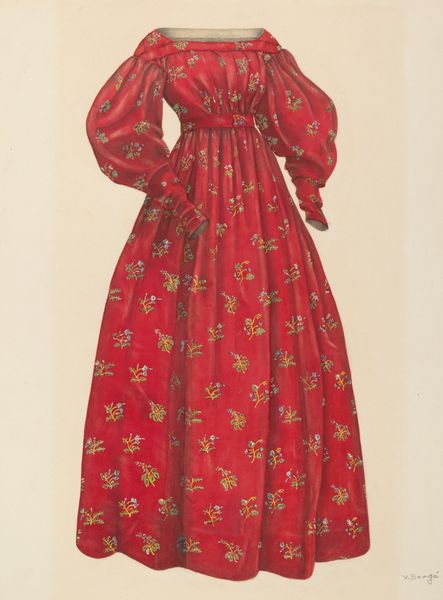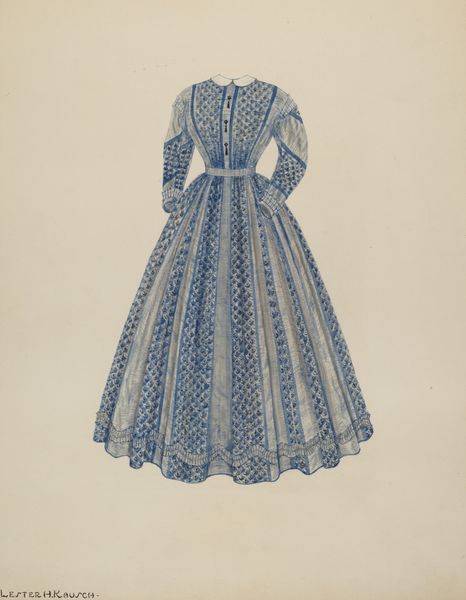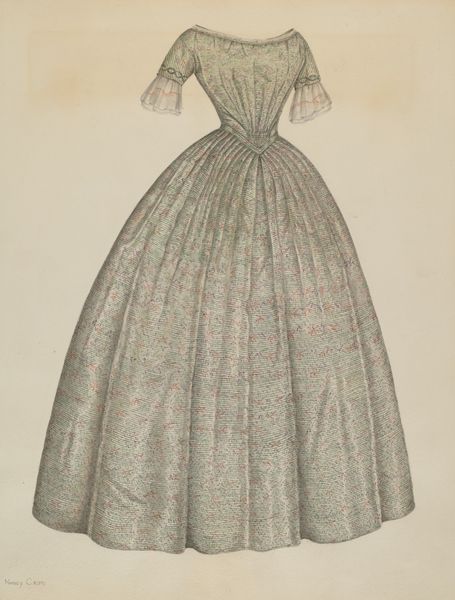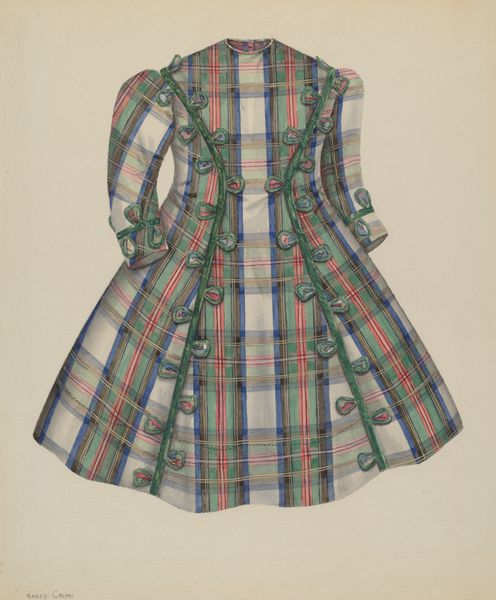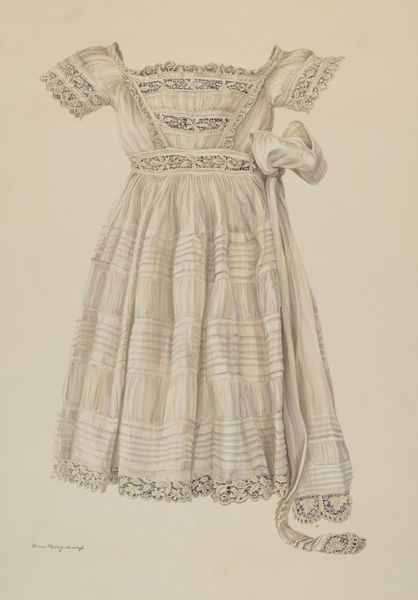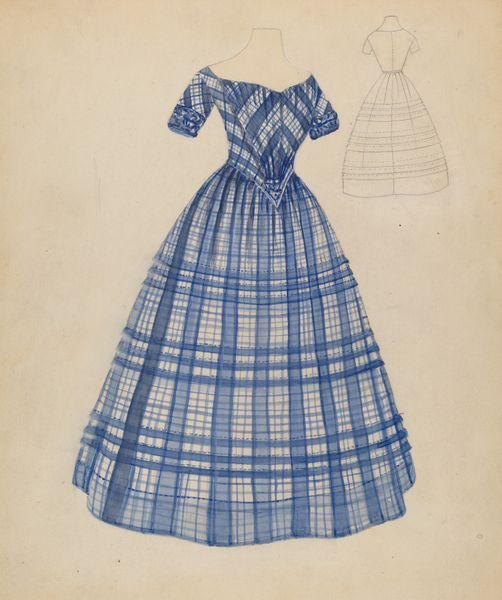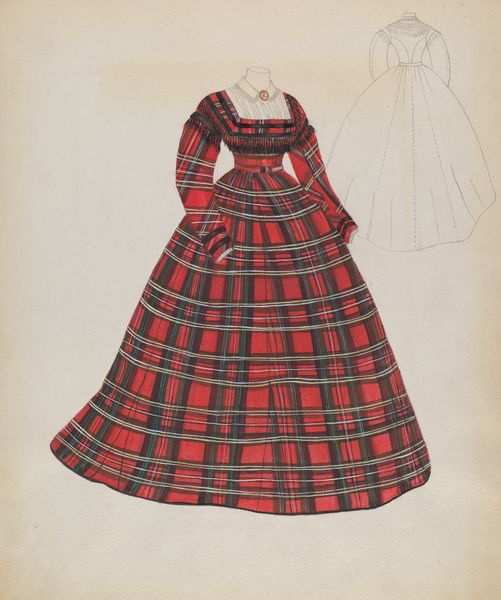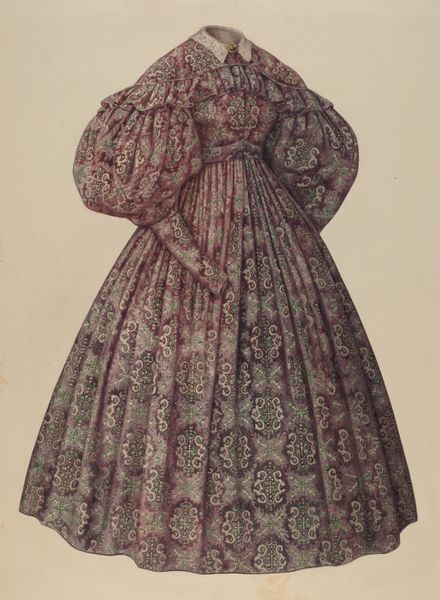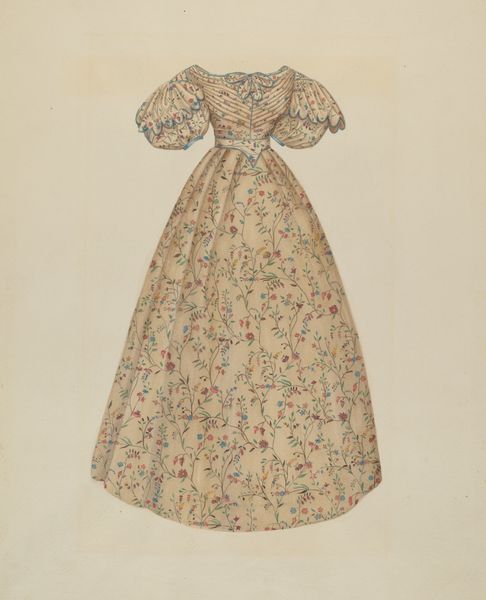
drawing
#
fashion design
#
drawing
#
feminine design
#
fashion mockup
#
collage layering style
#
fashion and textile design
#
fabric design
#
textile design
#
imprinted textile
#
ethnic design
#
clothing design
Dimensions: overall: 35.8 x 23.2 cm (14 1/8 x 9 1/8 in.)
Copyright: National Gallery of Art: CC0 1.0
Curator: Let's turn our attention to this fascinating design rendering, a mixed-media piece entitled "Visiting Gown," created around 1938 by Hans Mangelsdorf. What's your immediate reaction to this colorful textile study? Editor: Visually, I'm immediately drawn to the interplay of the plaid, such striking blues, oranges, and pinks. It possesses a rather sweet, almost doll-like quality. Though something about the pattern feels slightly unsettling—an almost frenetic energy perhaps? Curator: Indeed. This garment speaks volumes about the fashion and textile design of its time. There's an intriguing tension here, presenting what seems to be a domestic ideal in its subject while challenging expectations of how women were depicted through clothing, specifically its intended wearers. It really invites a conversation about domesticity and display. Editor: I agree, and those visual cues extend further, if we consider plaid as a cultural emblem. Worn throughout many groups—especially in traditional dress—it speaks to the collective but in its fashion form becomes an interesting, individual, display of identity. Here, that duality becomes quite stark. Curator: Exactly. The artwork intersects ideas related to tradition, gender, and modernity, visualized through textile as cultural document. Mangelsdorf gives us a way to ask about the societal pressures women felt regarding appearance in that period. Editor: Yes, I can see that clearly—perhaps the apparent tension I picked up on comes from the multiple layers of reference involved. But its formal language is undeniably compelling. I am intrigued how this image lives somewhere between symbol and cultural performance. Curator: It does encourage an interesting dialogue. In its own way, this work helps illuminate discussions about representation, textile histories, and gender performativity in early twentieth-century design. Editor: A lovely object through which to understand these conversations. It will be an object I consider for a long time!
Comments
No comments
Be the first to comment and join the conversation on the ultimate creative platform.


